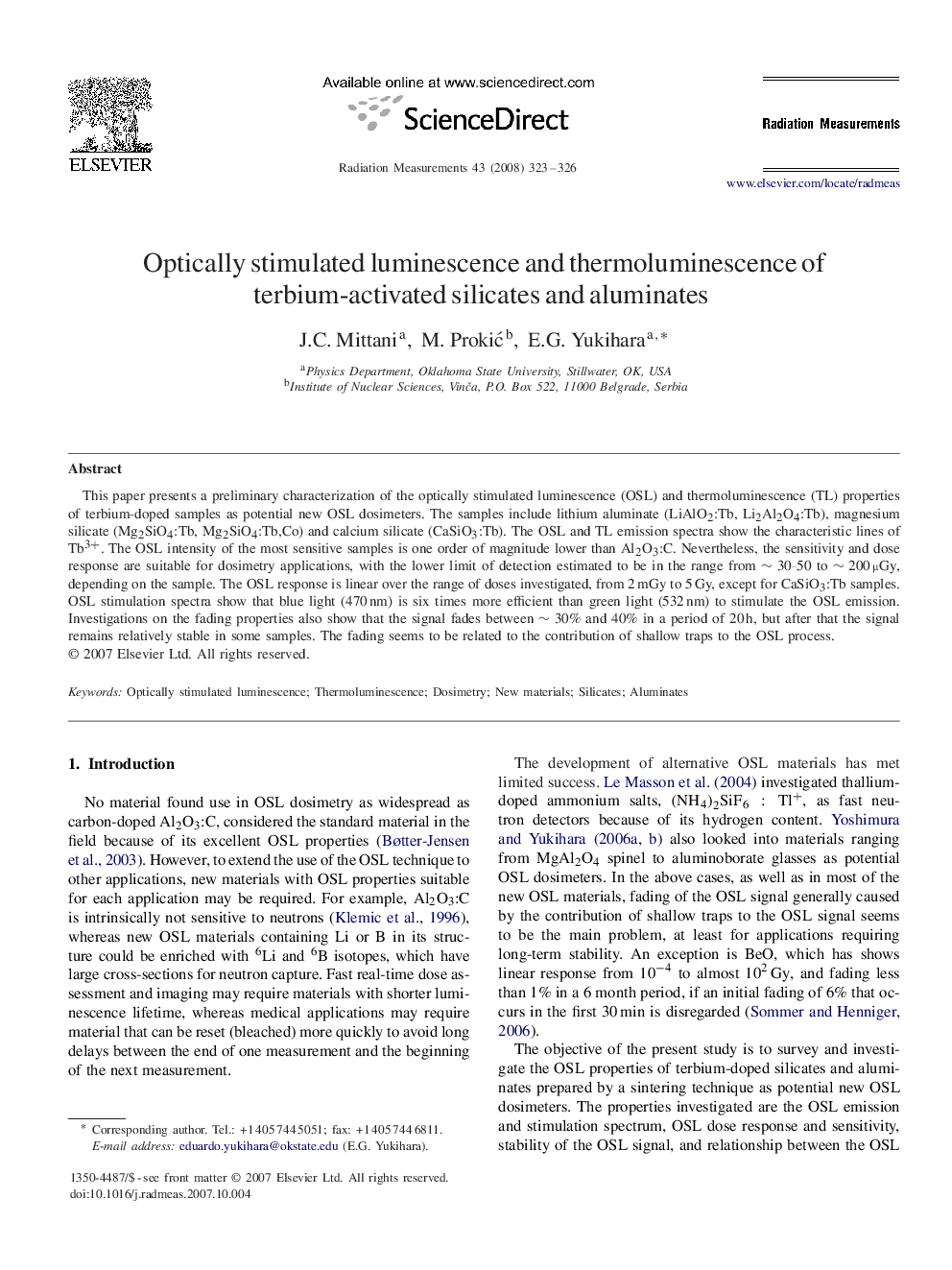| Article ID | Journal | Published Year | Pages | File Type |
|---|---|---|---|---|
| 1881885 | Radiation Measurements | 2008 | 4 Pages |
This paper presents a preliminary characterization of the optically stimulated luminescence (OSL) and thermoluminescence (TL) properties of terbium-doped samples as potential new OSL dosimeters. The samples include lithium aluminate (LiAlO2:Tb, Li2Al2O4:Tb), magnesium silicate (Mg2SiO4:Tb, Mg2SiO4:Tb,Co) and calcium silicate (CaSiO3:Tb). The OSL and TL emission spectra show the characteristic lines of Tb3+Tb3+. The OSL intensity of the most sensitive samples is one order of magnitude lower than Al2O3:C. Nevertheless, the sensitivity and dose response are suitable for dosimetry applications, with the lower limit of detection estimated to be in the range from ∼30–50∼30–50 to ∼200μGy, depending on the sample. The OSL response is linear over the range of doses investigated, from 2 mGy to 5 Gy, except for CaSiO3:Tb samples. OSL stimulation spectra show that blue light (470 nm) is six times more efficient than green light (532 nm) to stimulate the OSL emission. Investigations on the fading properties also show that the signal fades between ∼30%∼30% and 40% in a period of 20 h, but after that the signal remains relatively stable in some samples. The fading seems to be related to the contribution of shallow traps to the OSL process.
